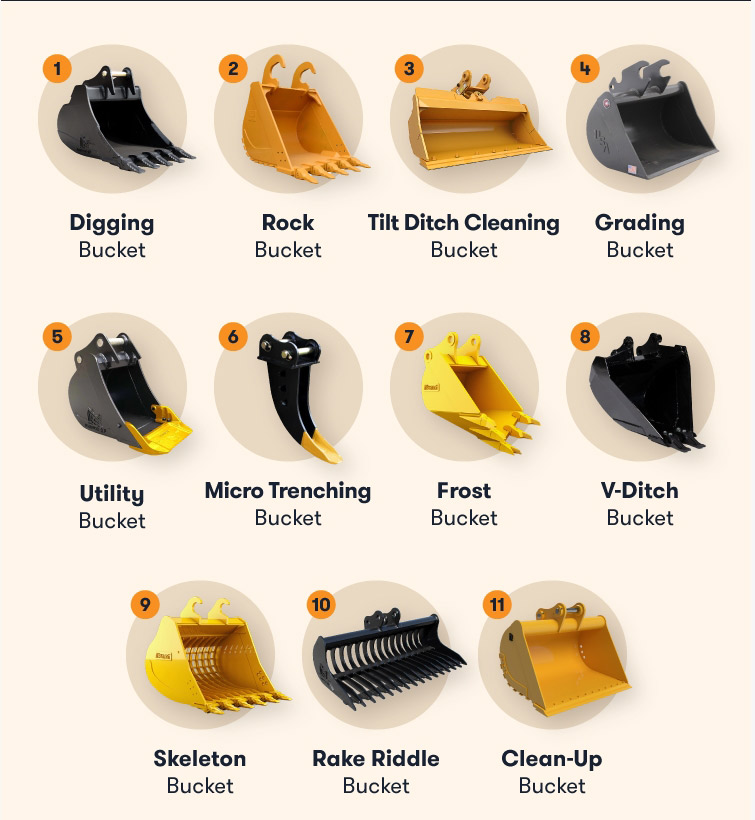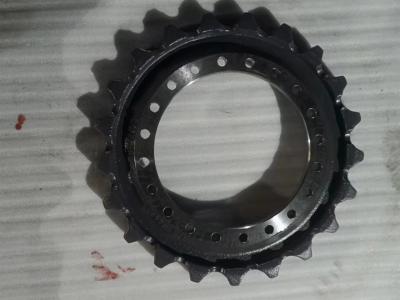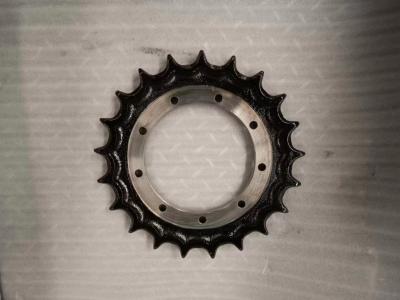What are The Different Types of Excavator Bucket
1. Digging Bucket:
The digging bucket is likely what one envisions when they’re thinking of a traditional bucket on an excavator. The digging bucket has multiple uses, but its main use is right in the name — digging!
A digging bucket typically features teeth on the end of the bucket that allow it to break through and dig up hard surfaces for general construction and landscaping purposes. While the digging bucket is the most popular, it’s not always the best choice. Projects that require digging up a hard surface may benefit from using a rock or frost bucket (more on those later), and then using a digging bucket to finish the job.
Best for: Digging up hard surfaces and moving material in general construction and landscaping projects.
2. Rock Bucket:
A rock bucket is ideal for compact and hard surfaces that you need to break through. A rock bucket is reinforced for extra strength that can withstand a lot of pressure, but the most notable feature of a rock bucket is its sharp teeth that can better penetrate stubborn surfaces when a digging bucket just won’t do.
A rock bucket is an extremely versatile option, as you can use it for various projects where digging and moving materials are necessary. Asphalt removal and stone extraction are two projects where you’d often see a rock bucket.
Best for: Penetrating and breaking up solid surfaces like asphalt, stone and large sheets of rock.
3. Utility Bucket:
Utility buckets prove to be extremely useful when you’re excavating near pipes and cables. Cable strikes are inconvenient and can harm to the excavation crew. With the utility bucket, construction crews can continue their digging or trenching without running the risk of striking a utility line.
Instead of teeth at the edge of the bucket, a utility bucket uses a rounded edge that is double-enforced for structural integrity. This rounded edge keeps excavators from accidentally catching loose cables and wires. Utility buckets are often seen on a project in a residential area that uses underground systems for their water, gas, electricity and other utilities.
Best for: Digging near utility lines and pipes without running the risk of striking a cable.
4. Grading Bucket:
A grading bucket is another common excavator bucket, but instead of using it for digging, a contractor uses it for smoothing and leveling a surface. Grading buckets, also known as finishing or trench cleaning buckets, are short, shallow and wide.
Grading buckets are not designed to move heavy materials but instead create a flat profile at the end of a project. The excavator operator achieves a smooth surface by dragging the long, flat edge of the bucket along the ground to distribute a fine aggregate. The nickname “finishing bucket” refers to when a project is over a contractor would use a grading bucket to clean up and level everything back out.
Best for: Leveling and profiling the ground to leave a smooth finish, also known as grading. Works best with softer materials such as fine dirt and sand.
5. Tilt Ditch Cleaning Bucket:
A tilt ditch cleaning bucket is true to its name. It’s a cleaning bucket with a similar build to a grading bucket. What makes this bucket special is that it can tilt 45 degrees left or right, allowing the operator to work at an angle.
A contractor typically uses a tilt ditch cleaning bucket when working on a trench or a sloping surface. Many consider this bucket to be a “finishing” bucket, so it’s typical to use it at the end of the project to tidy things up and leave a smooth finish.
The tilt ditch cleaning bucket is similar to the grading bucket because it uses a flat and wide edge to distribute and smooth out soil, sand or fine dirt.
Best for: Smoothing, cleaning and finishing more complex projects set on a slope or an otherwise uneven surface.





